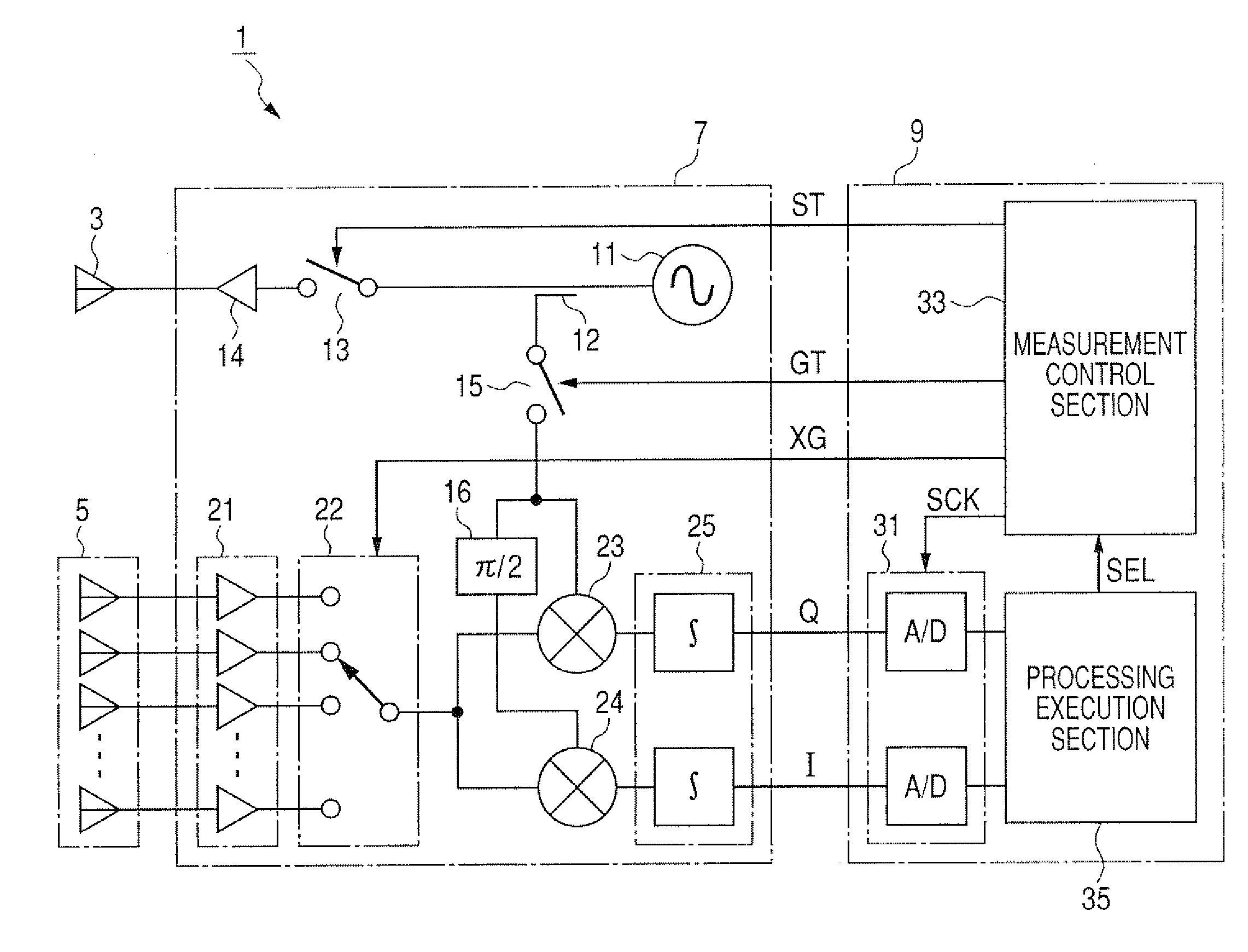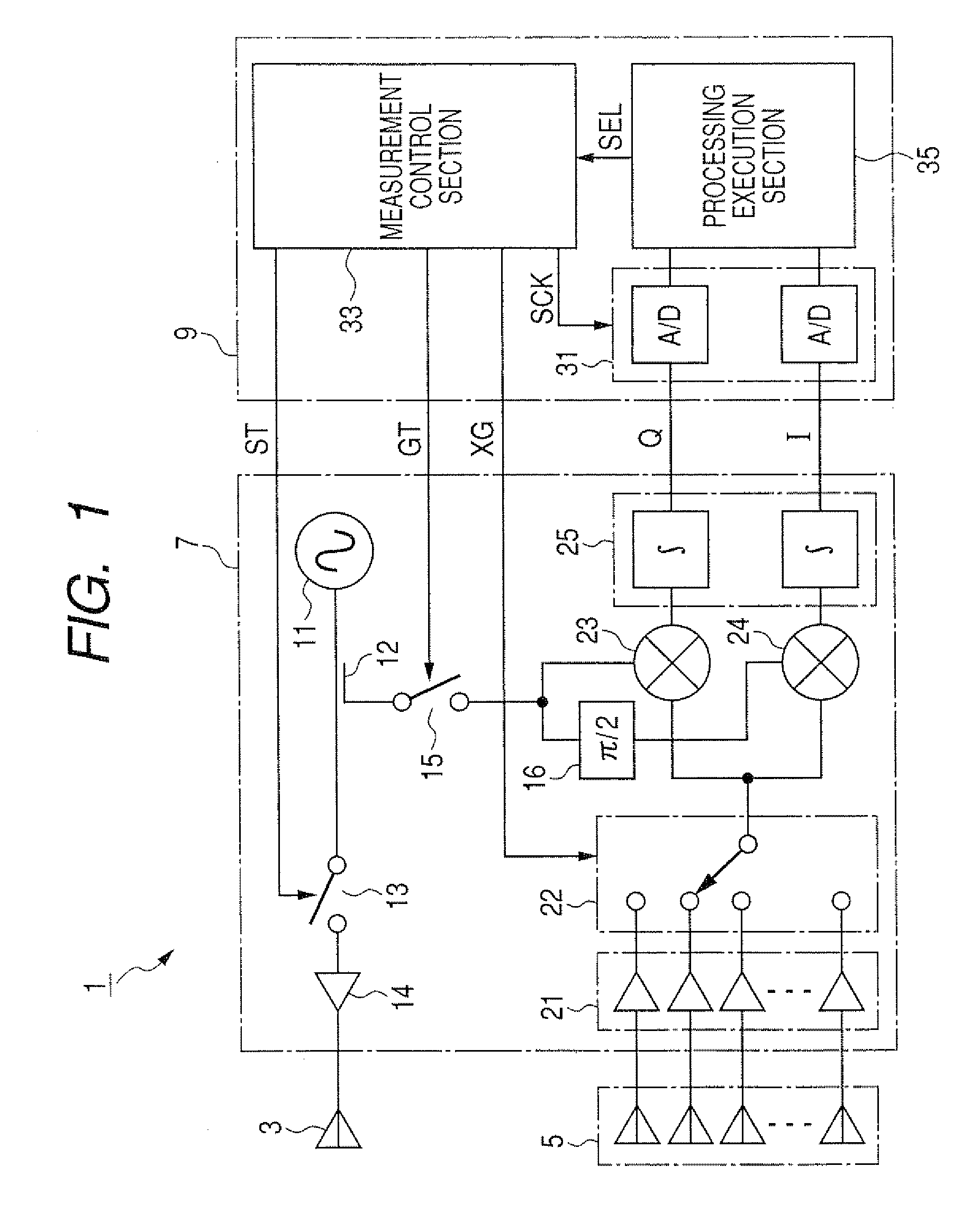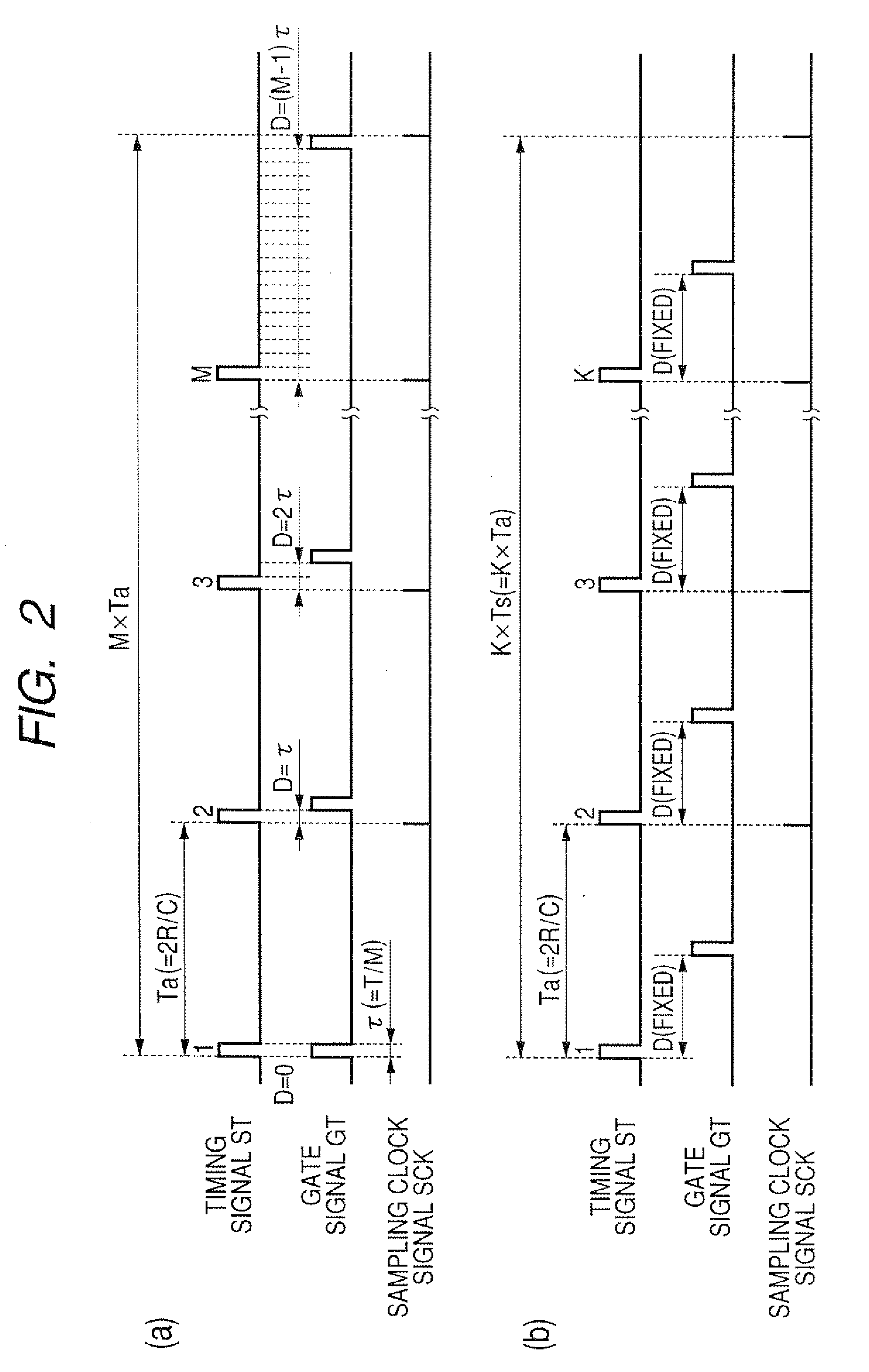Vehicle-installation direction detection apparatus enabling accurate detection of target body directions irrespective of vehicle speed
a detection apparatus and vehicle technology, applied in the direction of multi-channel direction-finding systems using radio waves, instruments, measurement devices, etc., can solve the problems of inability of the apparatus to distinguish the respective directions of a plurality of target bodies, low direction detection resolution, and extremely limited space available for installing systems, etc., to achieve accurate detection, eliminate correlation, and improve detection resolution
- Summary
- Abstract
- Description
- Claims
- Application Information
AI Technical Summary
Benefits of technology
Problems solved by technology
Method used
Image
Examples
Embodiment Construction
[0037]FIG. 1 is a block diagram of a pulse radar apparatus 1 which is installed on a local vehicle, and which detects respective directions of other vehicles, pedestrians, obstacles, etc., in the environment. As shown in FIG. 1, the pulse radar apparatus 1 includes a transmitting antenna 3, a receiving antenna 5, a RF amplifier circuit section 7, and a signal processing section 9. The transmitting antenna 3 transmits radar waves, and the receiving antenna 5 receives radar waves that have been reflected from a target body after being transmitted from the transmitting antenna 3. The RF amplifier circuit section 7 generates a transmission signal as a series of high-frequency pulses, which are supplied to the transmitting antenna 3, and also processes received signals that are supplied from the receiving antenna 5. The signal processing section 9 controls the operation of the RF amplifier circuit section 7, and detects information (referred to in the following as target body information...
PUM
 Login to View More
Login to View More Abstract
Description
Claims
Application Information
 Login to View More
Login to View More - R&D
- Intellectual Property
- Life Sciences
- Materials
- Tech Scout
- Unparalleled Data Quality
- Higher Quality Content
- 60% Fewer Hallucinations
Browse by: Latest US Patents, China's latest patents, Technical Efficacy Thesaurus, Application Domain, Technology Topic, Popular Technical Reports.
© 2025 PatSnap. All rights reserved.Legal|Privacy policy|Modern Slavery Act Transparency Statement|Sitemap|About US| Contact US: help@patsnap.com



